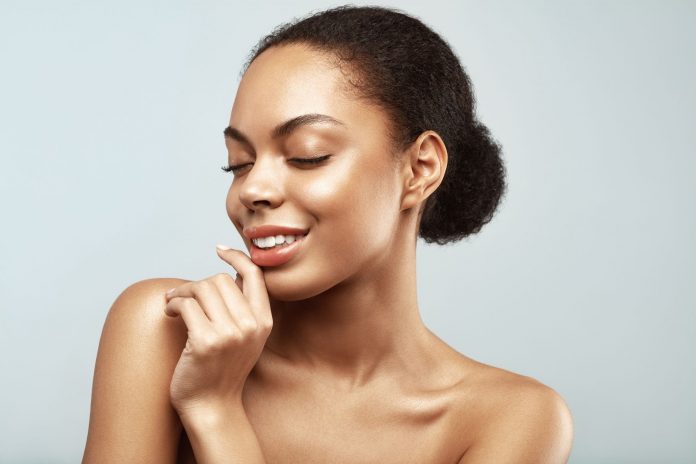Is there any skin-care term that’s bigger—and more loaded—than antiaging? In a society that puts such a premium on a youthful appearance, the claims surrounding antiaging ingredients in skin-care products are…challenging, to say the least.
The truth is that, really, nothing you do with skin-care can completely prevent, halt, or reverse the very normal and natural aging process that we all experience. And the rate at which your skin shows age depends on many different factors, including your genetics and your environment as well as your skin-care habits.
And, of course, you shouldn’t feel like you have to address any of the skin changes we associate with aging, like wrinkles, fine lines, or dark spots. Having wrinkles is not a sign of a health issue, and whether or not you want to try to reduce their appearance is entirely up to you.
So what do we do with these so-called antiaging skin-care products? Well, many of the most potent “antiaging” ingredients in these serums and creams do have well-established benefits, some of which may translate to a youthful complexion for some people. If you want to manage fine lines and wrinkles, for instance, you might want something that hydrates and moisturizes, which can make the skin look more plump. And products that gently exfoliate the skin will help reduce several different signs of aging, including texture and pigmentation issues, as well as manage acne.
This is also one area of skin care that’s constantly seeing new innovations that may or may not have actual evidence behind them. So, here are the antiaging ingredients that have stood the test of time—the ones dermatologists recommend to SELF editors over and over again. If you’re looking for something to help manage signs of aging, these are the ingredients you should look out for in skin-care products.
1. Sunscreen
It’s probably no surprise that sunscreen is number one on this list, and if you’re only going to do one thing for your skin, sunscreen should be it! By using sunscreen that has broad spectrum protection—meaning it protects against both UVA and UVB rays—and at least SPF 30, you can help prevent sun damage.
That damage can cause both serious issues, like skin cancer, and more cosmetic issues, like breaking down the collagen and elastin that keeps your skin firm and plump. Over time, that collagen breakdown can lead to premature signs of aging, like sagging skin and wrinkles. Sun exposure can also cause dark age spots and can darken other forms of hyperpigmentation, like melasma.
So, regularly wearing sunscreen will help prevent those issues. On its own, sunscreen won’t reduce the wrinkles or dark spots you already have, but it will help prevent more from forming, keep them from becoming more noticeable due to sun exposure, and protect your skin while it deals with any other issues you’ve got going on, like acne.
Unlike so many trendy skin-care ingredients, we have decades of information about different sunscreen ingredients and innovation in sunscreen formulas. Gone are the days of thick, pasty, boring SPF—today’s sunscreens come in both physical and chemical varieties (often containing a combination of the two) and absorb into the skin with little, if any, white cast left behind.
2. Retinol
Along with sunscreen, retinoids like retinol are the skin-care ingredients that have the best actual evidence for antiaging benefits. All retinoids are forms of vitamin A that occur naturally. But when you eat foods that contain vitamin A (like milk, eggs, carrots, and broccoli), your body needs to convert those preforms and provitamins of vitamin A into an active form that you can actually use.
Retinol is the first step on that pathway. And, as John G. Zampella, M.D., assistant professor in the Ronald O. Perelman department of dermatology at NYU Langone Health, told SELF previously, topical retinoids (including retinol) causes your skin to speed up its normal cell-turnover process, meaning that it will shed skin cells more quickly. That helps tackle issues like fine lines, wrinkles, dark spots, and acne. Researchers also think retinol can help increase collagen production, which reduces signs of aging.
The other major bonus of using retinol is that it’s basically everywhere. You can find retinol over-the-counter in drugstore and luxury products, so you don’t need a prescription for it.
However, because these products are regulated like cosmetics rather than drugs, you can’t necessarily be sure of what you’re getting. Although research shows that retinol is effective, there’s no way to guarantee that what you’re using in an over-the-counter product is as potent or effective as the retinol in those studies.
The other drawback of using retinol (or any retinoid, really) is that these ingredients are notorious for causing irritation, at least when you first start using them. That usually includes symptoms like dryness, itching, redness, and increased sensitivity. Not everyone experiences these symptoms, though.
If you do experience irritation with retinol, you can try products containing retinal (also called retinaldehyde), which is another form of retinol, or bakuchiol, a newer ingredient often touted as a natural retinol alternative. Both of these appear to cause less irritation than retinol.
3. Retinoic acid
Retinol is eventually converted into retinoic acid in the body, Dr. Zampella told SELF, so it’s probably not surprising that some of the most powerful prescription acne medications we have, like tretinoin (Retin-A) and isotretinoin (formerly Accutane, taken orally), are forms of retinoic acid.
Plus, the way these medications work—by increasing the cell-turnover process—also makes them great antiaging ingredients. And, because these are usually available only by prescription, you know exactly what you’re getting. However, as these medications are more potent than over-the-counter options, they can also cause more intense side effects, including dryness, flaking, itching, and sensitivity. When using a retinoid like these, it’s super important to moisturize effectively and, as always, wear sunscreen.
In addition to retinol, retinal, and retinoic acid, there are a few synthetic retinoids out there, such as adapalene and tazarotene, which some research suggests are less irritating than tretinoin and isotretinoin.
Adapalene used to be a prescription-only medication but is now available over-the-counter as Differin ($28, Amazon) and in products from AcneFree ($12, Amazon) and La-Roche Posay ($30, Dermstore). On the other hand, tazarotene (Tazerac), is still only available as a prescription.
4. Vitamin C
One of the most common active ingredients in skin-care products today, vitamin C acts as an antioxidant to counteract and protect against free radical damage, Shari Lipner, M.D., Ph.D., dermatologist at Weill Cornell Medicine and New York-Presbyterian, told SELF previously. Plus, it can also be used to effectively brighten dark spots over time.
But it can also be a surprisingly tricky ingredient to use correctly. It’s sensitive to light, for instance, so it’s important to only buy vitamin C products that are in airless, opaque packaging that protect it from degrading. And it also comes in varying concentrations (between 5% and 20%), which means the effects—and side effects, like irritation—may vary greatly between products.
5. Niacinamide
This increasingly popular skin-care ingredient is a form of vitamin B3 that has shown promise in fighting free radical damage, brightening dark spots, and managing acne. And those with sensitive skin will be pleased to know that some research shows it can brighten skin with fewer side effects or irritation than other first-line treatments, like hydroquinone.
Although your dermatologist can’t prescribe a niacinamide product on its own, this ingredient can be compounded into many other topical prescriptions, Laura Ferris, M.D., Ph.D., associate professor in the department of dermatology at the University of Pittsburgh, told SELF previously.
And there are more and more over-the-counter options for niacinamide out there as well.
6. Salicylic acid
Although you may be more familiar with salicylic acid as an acne treatment, this beta-hydroxy-acid (BHA) has some serious exfoliating powers, which makes it a good option for managing signs of aging as well. There’s some evidence to suggest it can also boost the production of collagen, Melanie D. Palm, M.D., San Diego–based dermatologist, cosmetic surgeon, and founding director of Art of Skin MD, told SELF previously.
Unlike other chemical exfoliants, salicylic acid is also oil soluble, SELF explained recently, allowing it to get deeper into your greasy pores. So if you have especially oily or acne-prone skin, salicylic acid could be a key ingredient for you.
7. Glycolic acid
One of two major alpha-hydroxy-acids (AHAs), glycolic acid a chemical exfoliant that’s regularly used in products like peels and exfoliating toners, pads, cleansers, and creams. It works by dissolving the bonds between skin cells, SELF explained previously. That way, when you wipe off your skin, you take away those skin cells and reveal the smoother skin underneath.
Glycolic acid is especially helpful for reducing signs of aging, like hyperpigmentation, fine lines, and wrinkles. But know that its effects vary depending on the concentration of glycolic acid in the product you’re using. Milder over-the-counter products—like toners, for instance—generally contain around 5% to 7% glycolic acid and max out around 10%. These can be used a few times a week.
But peels contain upwards of 20% glycolic acid (as much as 70% for deep in-office treatments). Products with concentrations this high should not be used anywhere near as often as lower concentration products, and many are only available in a derm’s office.
8. Lactic acid
Lactic acid is another, often gentler, AHA. It works similarly to other chemical exfoliants—meaning it removes dirt and dead skin cells—but tends to be easier on sensitive skin. For that reason, it’s also a good option for dry skin that may be irritated by other exfoliants, dermatologist Ellen Marmur, M.D., told SELF previously.
Some products contain a combination of lactic acid along with salicylic acid and/or glycolic acid so that you can still get the benefits of those ingredients with less of a risk for irritation.
9. Azelaic Acid
This is another type of acid that’s useful for exfoliating purposes. In fact, it comes in a few different prescription forms, which are prescribed to treat acne and rosacea (especially the type of rosacea that comes with acne-like bumps).
But that’s not all! There’s research that azelaic acid can also help brighten dark spots and melasma, John G. Zampella, M.D., assistant professor in the Ronald O. Perelman department of dermatology at NYU Langone Health, told SELF previously.
Products with the highest concentrations of azelaic acid are only available via prescription, but there are over-the-counter products containing azelaic acid in lower concentrations that many people find effective (including this author!).
10. Hyaluronic acid
Hyaluronic acid is one of the most common humectant ingredients out there today, meaning that it has the power to draw water molecules into the skin, Jenny Hu, M.D., associate professor of dermatology (clinician educator), Keck School of Medicine of USC, told SELF previously. It’s also a compound that’s found naturally in the skin, which makes it unlikely to cause irritation or allergic reactions.
When skin is more hydrated and moisturized, it may look fuller and more plump, which is why humectants like hyaluronic acid and glycerin are a mainstay of antiaging skin-care products. However, their effects aren’t permanent and may even wear off throughout the day, so you’ll have to reapply these products regularly to continue seeing the effects.
For more permanent effects, you may want to look into hyaluronic acid fillers, which are used to fill in areas of the skin like the undereye area and nasolabial folds. The effects of these treatments usually last between six months and two years.
11. Ceramides
Your skin barrier (the outer later of skin known as the stratum corneum) is made up of a few key compounds, including skin cells and different types of lipids that surround them. When this barrier is intact, it protects your skin from damage and the loss of water.
But if it’s not functioning properly, it can let hydration seep out, causing dryness and less plump-looking skin. Dry skin can also exacerbate the look of fine lines and wrinkles.
If you’re dealing with issues like these, a product containing ceramides—one type of lipid found naturally in the stratum corneum—may be a good option to better seal in hydration, Mary L. Stevenson, M.D., assistant professor in the Ronald O. Perelman Department of Dermatology at NYU Langone Health, told SELF previously. And, as a result, ceramides can help manage some signs of aging.
































